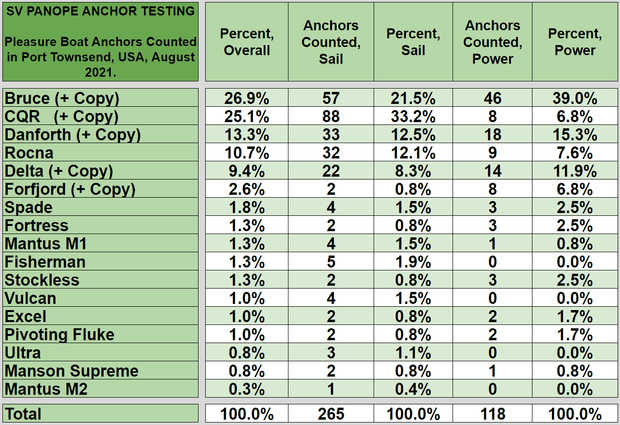
It’s been an absolute age since I wrote one of these articles. Seems like over the last couple of years I have been focused on in-depth articles, with the required research, writing, and polishing, not to speak of being part of the resulting interesting discussions in the comments.
Anyway, here are a few thoughts that don’t warrant a full article, followed by some photos.
Old Anchors Still Rule
The chart at the top of the article that Steve Goodwin over at S/V Panope did for his Patreon patrons—I highly recommend supporting Steve—puts some hard numbers to a strange phenomenon that I have noticed any time I walk around a marina.
It seems that the vast majority of boaters are still using obsolete anchors, most notably the CQR and Bruce, even though it’s over two decades since far better alternatives appeared. (We specifically warn against those old anchors.)
Also interesting that the most used new generation anchor is the Rocna, even though it has a dangerous dragging modality.
My guess is that the underlying cause of this strange situation is that most boaters just don’t anchor very much, so maybe:
There’s less in this than meets the eye.
Tullalah Bankhead (maybe) as quoted by H.W. Tillman in many of his books.
That said, I think there is a useful lesson here:
The wisdom of crowds is worse than useless if the crowd is not doing the same things we are. In this case, actually using their anchors and, even more importantly, using their anchors in challenging conditions.
A Great Read
By the way, the above quote is used repeatedly in books by one of my favourite sailing authors, Major H. W. (Bill) Tilman.
Tilman was a soldier in both world wars and one of the world’s great climbers, who, along with his partner Eric Shipton, pioneered fast and light climbing at high altitude.
Both Tilman and Shipton wrote extensively about their adventures but, to be honest, if you are interested in their climbs, you only need to read Tilman, since Shipton’s style is a tad dry.
Then, after the second war, Tilman took to sailing, at least initially to get to remote climbs that could not be accessed any other way.
In the process he made voyages to both the southern and northern high latitudes on a series of superannuated gaff-rigged Bristol Pilot Cutters—three of them, since two didn’t make it back, one the victim of ice and the other a rock—with pick-up crews and no electronics.
If you have any interest in, or aspirations to, offshore sailing, high latitude or not, you need to read Tilman. Yeah, I know you have YouTube videos to watch full of firm young bodies cavorting in warm emerald waters.
Fine, but if you want to hear about real adventure and learn useful stuff like what seamanship really means, beautifully told, read Tilman. You will be glad you did, I promise.
And no, we don’t get a kickback from Amazon when you buy.
A Tragedy
I recently wrote a how-to piece on setting and striking asymmetric spinnakers with a sock and a reader sent me a link to a news story about a tragedy on a J/120 in which a loop in an asymmetric spinnaker sheet tightened around the bow-man’s leg, dragged him off the deck and through the water head down, resulting in his death.
From reading the account, albeit brief, it sounds to me like a freak accident that was no one’s fault, least of all the victim’s, but none-the-less this tragedy is a reminder to all of us that the forces on even comparatively small boats like the J/120 are huge, and particularly dangerous around large free-flying sails like asymmetric spinnakers.
It’s also important to keep in mind that the victim was a deeply-experienced sailor and a member of what sounds like a practiced and well-drilled race crew, so this was not a newbie screwup.
Phyllis and I will definitely keep this tragedy in mind as we learn to handle our new-to-us J/109. We may have well over 100,000 miles of experience in our wakes, but we still need to be careful and, above all, keep learning.
Photos
The title promises photos, so here are some:
Don’t See This Every Day
Phyllis and I were out rowing and passed by our neighbour Chris Stanmore-Major’s IMOCA 60 and 82 Maxi rafted together.
Both boats designed for racing around the world, but the former single handed and the latter with 18 crew.
Seeing the two boats together is a graphic demonstration of yacht racing design rule type forming and how different missions produce radically different boats.
I know which one is cooler, at least to me.
Please leave a comment with your choice and why.
I also took two other snaps with the boats separated to help you make your choice.

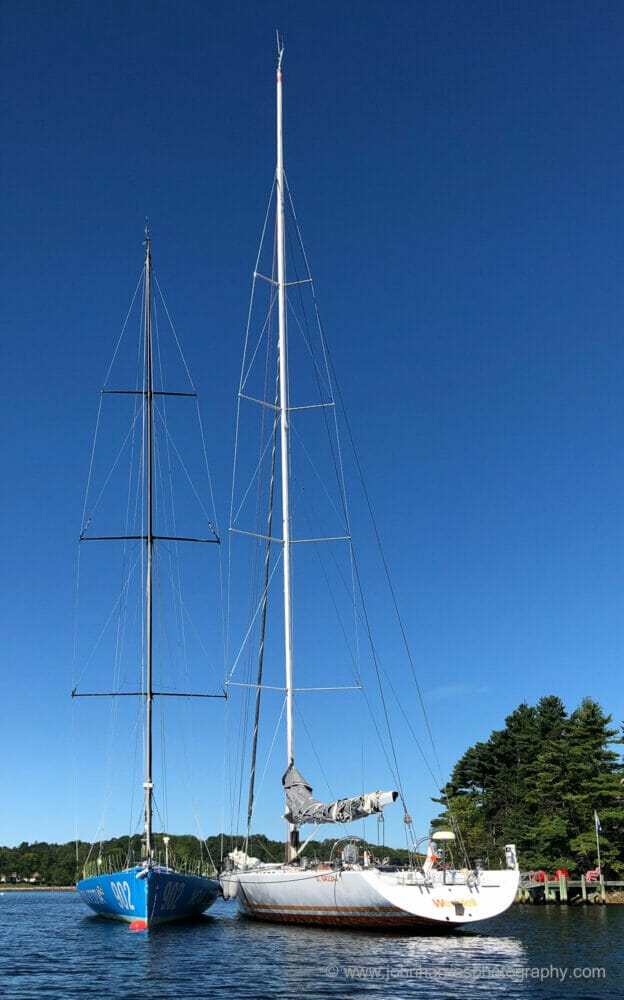

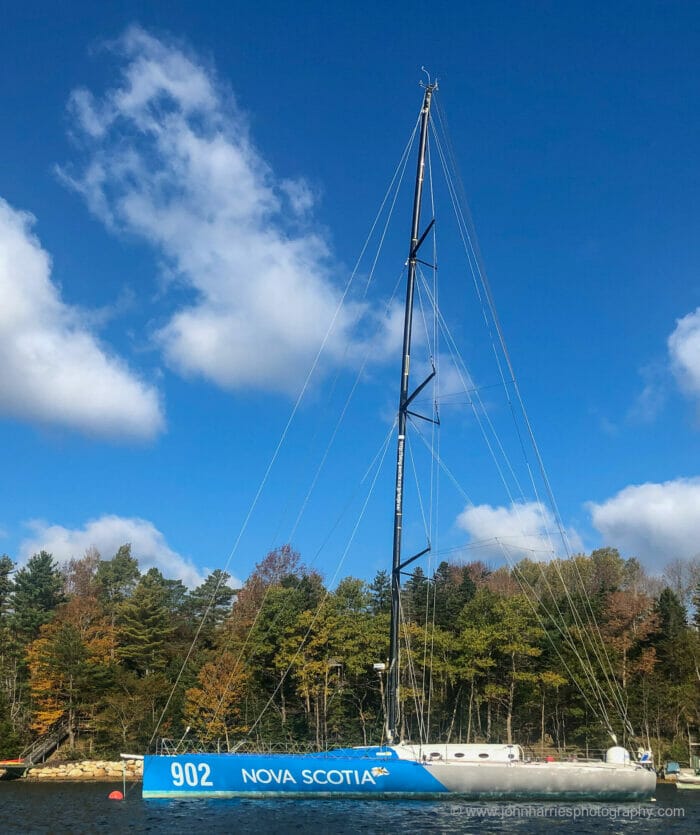
Brier Island
Back in August, we took a road trip to Brier Island on the other side of Nova Scotia, a place where the water goes away twice a day in a major way.
I took the first few shots at Sandy Cove, a harbour at the head of St. Mary’s Bay that I had long looked at on the chart but never got around to visiting by water.

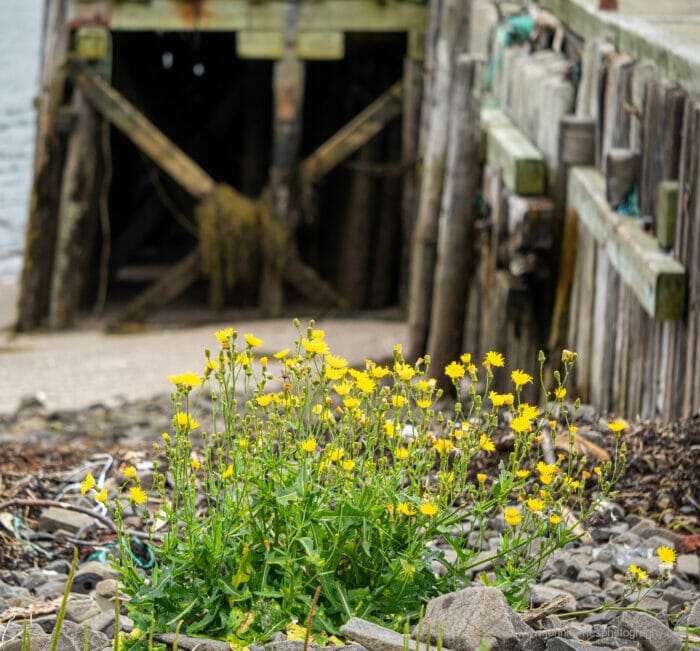



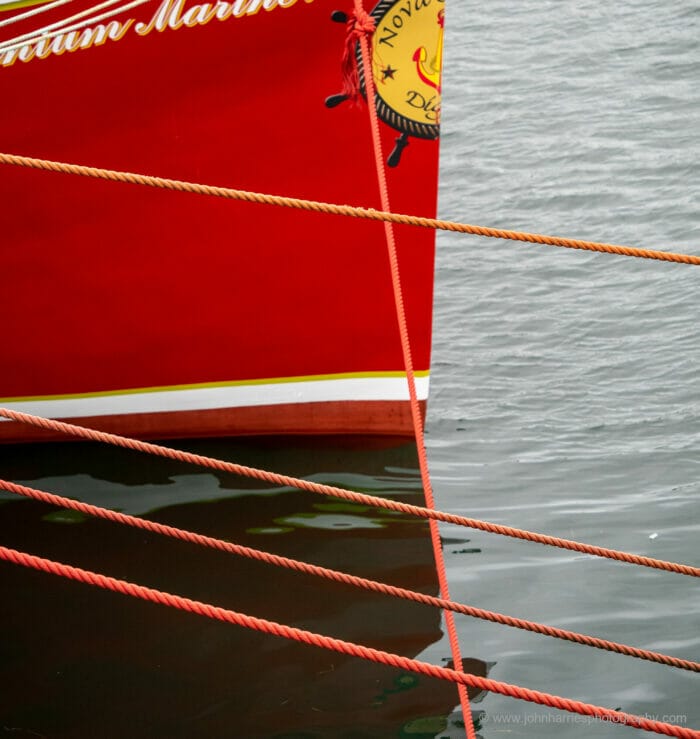
We made a quick stop on Long Island and hiked to Balancing Rock.
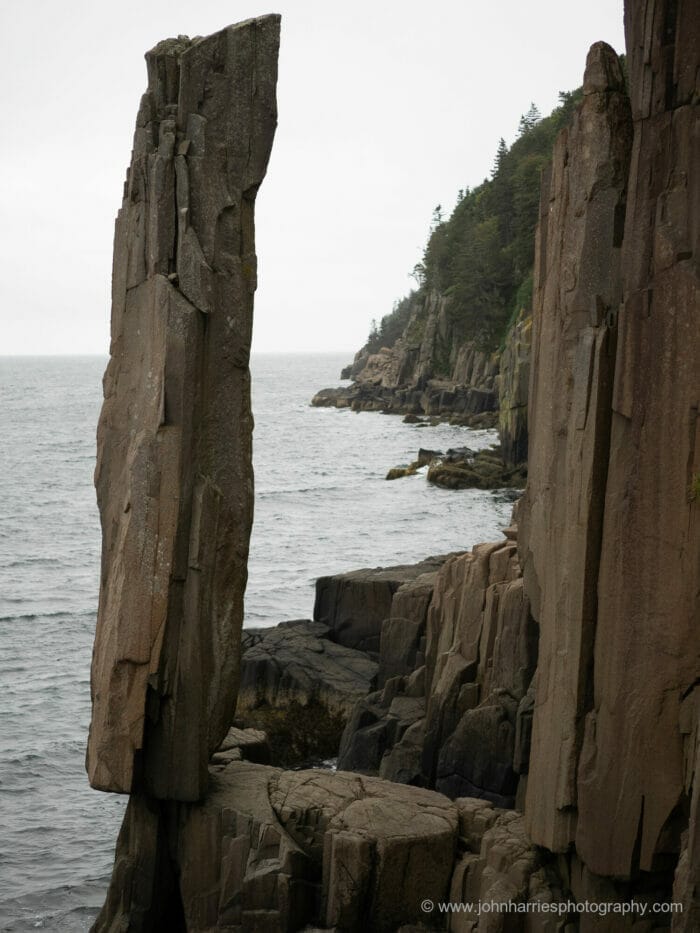
Brier Island is not the end of the world, but you can sure as heck see it from there. Two ferry rides to get there by car.
I visited 29 years ago in our McCurdy & Rhodes 56. Back then we anchored off the town in Grand Passage, just out of the worst of the current, but that area is now filled by a fish farm, so no longer an option; however, it would probably be possible to tie to a fishing boat in the sheltered breakwater harbour.
Well worth a visit for the great walks. And dinner at the Inn is good, too. A visit by boat is a real attainable adventure.

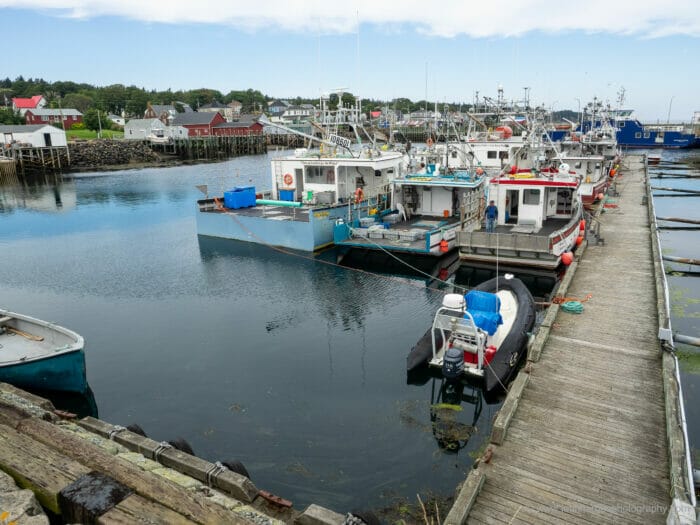



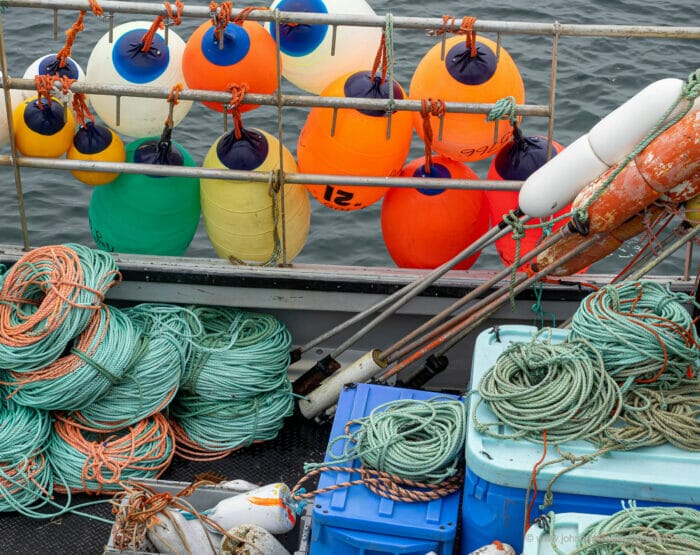
Wide Stern
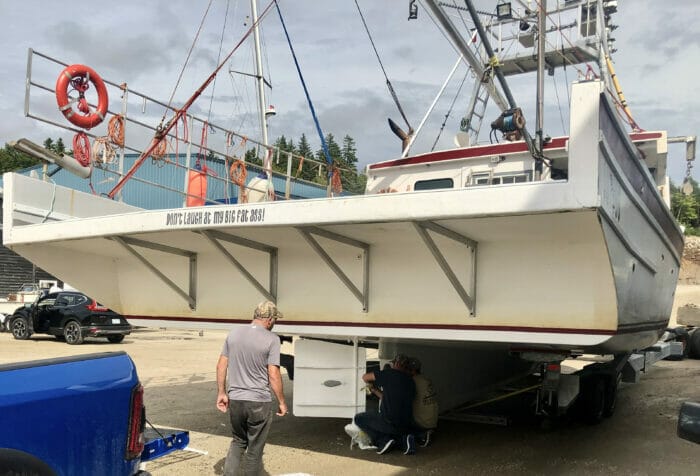

John
That anchor list pretty much chimes with what I have observed when forced into marinas in Italy this autumn. One of the bonus’s of being in a marina is the chance to get up close to a large variety of boats. Boat peeping or at least obsessing.Two differences I observed were the prevalence of the Delta over other modern anchors including the Rocna and the growing popularity of the stainless Vulcan, especially on motor yachts and shiny sailing yachts
Most strange to me is the Bruce occupying the top of the list. At least the CQR works most of the time. The number one rule in the eighties, when I started, was if a boat came and anchored near you on a Bruce you got your own anchor up and moved. And now that most yachts have the luxury of electric anchor winches it is an easier rule to follow.
Best
Mark
Hi Mark,
Thanks for the observations. I too always go boat peeping in a marina.
I guess the good thing about the Bruce was that it set better and faster than the CQR, but that’s about all I can say that’s positive. What a relief it is to have better anchors!
I guess we anchored about a dozen times this season (we hauled yesterday at you know where) and the SPADE never worried us. Au contraire: we found its affinity for mud made us wonder if our Lofrans Tigres windlass was up to the task. Probably a good problem to have, however. We didn’t get a chance to switch over to the larger Fortress for a comparison, but it might be the easier choice when the wind is light, the pressure high, the current moderate and “ultimate holding” is not required for lunch and a nap. Anyway, this website’s advocacy of more modern designs directly drove our purchase.
The Bruce, Delta, and CQR stick around because if you just need a lunch hook, or something to drop overnight in good bottom conditions when the forecast is for Force 2 winds and 2-foot chop, they’re usually just fine.
No, they aren’t what you want if you’re going far afield, and have to rely on your anchor in gnarly conditions. But how many boats in our marina ever do that? 6 out of 70, perhaps?
Hence the cost-optimized decision at the factory to fit the cheapest anchor that meets the legal requirement (there’s a Ranger Tug near us that has a 5 kg Lewmar Claw, so comically small that I wouldn’t trust my 15-footer to it over lunch) and trust that any owner who cares will do their own research and pay for the upgrade. A boatbuilder can get generic 20 kg Bruce copies wholesale for about a hundred dollars a piece. They’d need to pay five times that for an equivalent modern anchor. In a low-margin high-risk business, the BOM cost wins the day.
Hi Matt and all,
I suspect the boat manufacturers are clear that anchors are a very personal decision and that when they send their boats to the show, they just throw on a handy anchor. That may explain why you have this beautiful 45-footer with an anchor that looks like a toy on the bow as ridiculous as it may look. That and anchors do not sell boats.
I have a friend who used to consult with (often inexperienced) owners of new-out-of-the-box boats on the wealth of decisions needed after delivery and anchors were always a big topic.
My best, Dick Stevenson, s/v Alchemy
Hi Dick,
I wish I agreed on the reason, but I fear it’s just penny pinching. That said, the bigger problem is that the anchor rollers are usually totally inadequate and the wrong design for a modern anchor. I suspect this is another reason we see so many old style anchors out there.
I find it strange observing at the recent Annapolis boat show is how so many production boat builders continue to ship new models with Delta anchors. Is the price difference, even at scale, that much?
Hi Jamie,
I hear you, but then again the length that production boat builders will go to to save a couple of bucks never ceases to amaze me.
I had a Spade 160 (77lbs) on my recently sold 60 foot schooner and personally I wouldn’t go afar with anything else. I used it for several years and always slept with piece of mind knowing that the $1700 I paid for it was well worth every penny. But on my 26 center console fishing boat I have a CQR and would not consider changing it out. The fishing boat stays at the dock unless I am out cruising or fishing. When I do use the anchor for a couple of hours it holds well in the conditions in which I use it – nice weather. I suspect the majority of the boats at the marina that Steve visited use theirs very much how I use my center console. Not all boats need a modern anchor for the conditions they use it. But you can bet your a$# the next cruising boat I buy will have a Spade on it!
Hi all,
I find myself wanting to make a case that one should be equipped, when you drop your mooring (or leave your marina), for the worst that your area can throw at you unexpectedly. For me, in my early years on Long Island Sound, this was the occasional late afternoon summer thunderstorm which felt like survival conditions for 20 or 30 minutes (and a lot can go seriously pear shaped in 20 or 30 minutes). This could be at anchor or under sail on our way home.
So, while I understand the argument that one does not have to be high latitude expedition level prepared, nor do I think it wise or sea-worthy to go out without good equipment. To that end I would suggest a Spade (or another new gen anchor) on all boats: it is a safety issue.
Some of our worst times have been within 10 miles of our homeport.
I would also suggest that, in comparison, CQRs (and the like) should be considered not good equipment for all boats. I can think of no argument in their favor except to save money and John has already dealt with the question of money more than adequately.
My best, Dick Stevenson, s/v Alchemy
Hi Dick,
I guess I could see William Lee’s argument, but on the other hand I definitely see yours too. An engine failure on a lee shore coupled with the CQR’s tendency to drag a long way before setting comes to mind.
Hi John, That, among a few others, was one of the scenarios I had in mind, Dick
Hi John and all,
I will use this stream to flog a concern I have been sharing here and there over the last few years and now on AAC.
To begin: I believe our “deal” with Search and Rescue support services is that we will go to sea well equipped and well prepared and, if we run into serious bad luck, they will try to help us. That is the deal that “gives us permission” to carry an EPIRB and put out a MAYDAY on vhf.
That said, I see far to many boats out there who, in my estimation, are not living up to their side of the deal.
By well equipped, I mean that there is appropriate gear to deal with reasonably expected bad conditions and low-level bad luck that might occur: a skipper does the hard thing in preparation and in expenditure so as to live up to his/her part of the deal. Well prepared also applies to the skipper and crew: they need to have the requisite skill and experience to deal with reasonably occurring difficult conditions in the area and the occasional low-level bad luck that any boat experiences.
My major concern is that at some point, a rescue will lead to the death of or serious injury to an SAR personnel. This would be tragic in any scenario, but if the rescue was of a vessel where it was clear that the boat & crew should not have been doing what got them in trouble: that they suffered not from bad luck, but rather from poor judgment, poor preparation and/or inadequate equipment, the tragedy enters a new realm.
Think of trying to explain to the spouse of an injured/killed SAR person that the injury/death occurred during a rescue of a skipper who was off Cape Hatteras in Nov. and had little or no offshore experience. Or a single-handed skipper who has chosen to navigate solely by sextant and ran aground. These rescues can be and often are dangerous.
Another concern, also potent, is that there may be a bureaucratic demand to develop rules and regulations which impact one of the major appeals of a cruising life for me: independence and freedom from interference. This has already occurred in isolated instances.
Now, I admit where one draws the line is argue-able, but I would contend, the issue is not.
My best, Dick Stevenson, s/v Alchemy
Hi Dick,
Very well put. I agree completely.
Hello Dick,
among the many comments I agree and appreciate in the AAC I wish to say that your comment on the “deal” between a sailor and the SAR personnel is really right and I fully agree on the rationale. On the issue of the anchor choice I have been sailing for many years in the Med with a Delta or CQR anchor and never felt comfortable with them. Since a few years my 43 Solaris boat is sailing in Scotland and Ireland with a new 30kg Spade, simply there is no match. I would never change it with an old design irrespective the seas I am sailing.
Best regards
Paolo Fantini, s/v New Lhella
Hi Paolo,
Thanks for the support. I write about these concerns with some trepidation, so your writing that you see things as I do is appreciated.
I too, was in the Med when I gave up on my CQR and got the Spade: no looking back and anchoring in the Med became far less anxious.
My best, Dick
Hi William Lee,
That makes sense to me.
Regarding the race boats. The big maxi is undeniably the prettier of the two. But I just love the systems engineering and the attention to detail that goes into making an IMOCA 60 single-handable in the open ocean. Maxis can always throw more rail meat at the problem, where an IMOCA has to be insanely efficient and well-engineered for one person to be able to handle all that
canvasspace-age carbon laminate while matching boat speed for wind speed, or better. That’s seriously cool.Can’t disagree with your analysis Matt,
But when you’re given the helm of a maxi or in my case an America’s Cup 12 metre and you’re sailing effortlessly at 12 knots upwind with finger tip control…? No contest sorry. Rob
Hi Rob,
What about surfing off on a broad reach in an IMOCA 60 at 20 knots (average without pushing the boat) steering with a tiller with finger tip control? Sounds to me like a pretty good contest.
What is often missed about the IMOCA 60 is that it is very easily steered, even at high speeds.
No disagreement John, amazing boats. But if AAC offered an afternoon sail at the helm of just one, I would choose the maxi.
Hi Matt,
Exactly the way I look at it. I’m totally fascinated by the IMOCA boats. To me it’s just incredible that they have come up with designs that can circle the globe faster than any motor boat and faster than fully crewed Maxis, but with just one person aboard.
Hi John and all,
And then there is the quality of the skippers. I do not pay much attention to the racing scene, but I was totally gobsmacked by the documentary of Ellen MacArthur back-when. Dick
I felt the same way reading about the inventiveness and sheer tenacity of Yves Parlier back in the ’90s.
Hi Marc,
Parlier’s achievement in completing his voyage was, I think, one of the greatest stories of seamanship of all time. And then his decision to retire because of a minor infraction one of the greatest examples of sportsmanship.
I agree entirely. That voyage’s challenges made Parlier seem like a one-man Shackleton Expedition.
Indeed. I recall seeing Ellen MacArthur interviewed by Jeremy Clarkson once…. she talked about single-handing there comically overpowered yachts in insane weather, then took Top Gear’s Suzuki around the track, effortlessly topped the chart, and her time stayed right up there with the F1 drivers until the car was replaced. Phenomenal skill, in so many areas.
Hi Matt,
I didn’t know about that, just one more accomplishment to add to the many of a truly amazing woman.
Hi John, everyone
The local Commercial fleet has returned (for the winter) to Port Townsend, so I continued the survey (see image attached to this post).
As can be seen, John’s statement “Old Anchor Still Rule” is even more appropriate for the commercial vessels.
Note: “Commercial Conversion” refers to vessels that were originally built as working craft and were later converted to pleasure.
Note: “Heavy Danforth” refers to a type of heavy, cast steel, old school anchor that resembles the Danforth anchor.
I found that several of the “Heavy Danforth” style anchors had badly bent “stocks”. I believe this gives us evidence as to why these watermen stick with the very heavy Forfjord and Stockless anchors: They are VERY robust and are less likely to bend when used in seabeds with boulders.
Standard procedure for dealing with these low performance anchors (when they inevitably drag), is to stay awake, run the engine, periodically re-anchor, or put to sea. This does not sound like a lot of fun to me, but these people are well accustomed to being tired/uncomfortable/miserable.
Personally, If I were a fisherman, I would have two anchors at the ready: An old school “battle ax” for the rocky areas, and a modern anchor for the mud or sand bottoms. On many commercial vessels, this would require the addition of an “overhanging” bow roller and perhaps a second windlass. Well worth it my book, but perhaps not for these seasoned pros.
Note that not a single commercial vessel that I observed, had more than one anchor.
Steve
Hi Steve,
That’s a fun study, just looked at it on your Patrion.
Yes, I have observed the same thing on commercial boats on this side of the continent. Never ceases to amaze me. If I were running such a boat I would default to a massive steel Spade and back it up with a massive Luke. Using that combination I have never failed to get anchored in rocky and areas with kelp in over 25 years of going north, and never dragged once set.
In fact we have never had to use the Luke since we got the Spade, but just having a fisherman style would, I suspect, keep these guys happy, so that’s why I mentioned it.
And we anchored way more than most all commercial vessels do, so I feel pretty comfortable with this recommendation.
Hi John and all,
Speaking of Lukes:
I loved having the Luke: it felt old school with its wonderful design and wonderful construction. I imagined it as a pick settling in and grabbing onto the bottom. But it was a nightmare to handle its 80 pounds and its protuberances on deck in calm weather without doing damage to the boat or crew (let alone a boisterous nighttime deployment). When Spade replaced my badly rusted Spade and I upgraded to one larger, I was left with a cosmetically challenged, but entirely functional, anchor that, I felt, was a far better all-around storm/second anchor than the Luke, even when a few pounds lighter. And very much easier to deploy.
The Luke found a nice home in a “character” boat.
I suspect commercial vessels might make good use of them as well.
My best, Dick Stevenson, s/v Alchemy
Hi Dick,
I agree. That said prior to the invention of the SPADE the Luke was the only anchor that worked in most all anchorages, once north of Newfoundland, so none of the amazing places we anchored in our early high latitude cruises would have been available to us without it, so I get why the commercial guys are still partial to fisherman style anchors.
Hi Again Steve,
Here’s a thought for you. Since you are weather bound, how about creating a written index to your videos with links, sorted by anchor type and also by subject.
I love your content, but one thing I find frustrating is that if I want to say research one particularly anchor I have to sift through over a hundred videos to find what I’m looking for. For example I have become very interested in the Mantus M2 but the thought of trying to figure out which videos you have tested it in is making me tired!
You could then host that index on your Patrion site right on the home page but only available to your patrons, which would be a powerful incentive to support you. If you do that I will link to it from our anchoring online book, which should help too.
Of, if you prefer, we could host the index here at AAC, but outside the paywall, which would increase your traffic since we already have good Google page rank.
I sugest this because one of the biggest contributors to this site’s financial viability has been our years of efforts to make our content easy to find. The idea is to become a reference source that people return to again and again, rather than only visiting when we publish new content. This is an example:https://www.morganscloud.com/cruising-topics/ and here’s another: https://www.morganscloud.com/about-online-books-2/
This seems to have worked since during our recent vacation our traffic and new member sign ups dropped off very little, even though we did not publish for three weeks.
Great idea John,
Might be a pretty big project, but I can see how an index would be of great value. I’ll get get right on it.
Hi Steve,
Yes, it’s a huge project. We have spent years at it here at AAC and still keep thinking of ways to improve our curation of our over 1000 articles and chapters—it’s kind of like varnishing: never done.
What I would suggest is start off with just an index by modern anchor type—don’t worry about old style anchors for now, or any anchors that score really poorly—and then see how it goes.
Anyway, let me know when you have something ready and I will write a short post and link to it.
Hi John,
Brier island is definitely a cool spot. Years ago we went and rafted up off the government wharf there but I don’t know the current situation. As someone who didn’t grow up with the government wharf setups you guys have and only occasionally visited, it has always felt a bit weird to me but I have also never had a bad experience provided you are mentally prepared for letting your neighbors out. Your system of land use rights on the shoreline is definitely nice, there is talk of changing stuff here but people are arguing it would change their property values. I find the whole of St. Mary’s Bay to be a really weird place to sail as it is a decently big area and there are no real nooks along the side to tuck into and anchor. We spent a very spooky to me night at the north end of the bay years ago and I haven’t felt the need to go back since. A bay north in Digby feels a bit more reasonable to me but if you draw a lot (I have been there drawing 12 and 13.5′ in addition to our boat), there aren’t many places to go without being in the channel. I similarly find Annapolis Royal kind of scarily open to the SW but then again the winter moorings for the fishing fleet are up there. That whole side of Nova Scotia is so amazingly different than your side, New Brunswick and Maine.
Eric
Hi Eric,
I agree with your assessment. Although I have cruised the outer Bay of Fundy side and south western tip of our province quite a bit over the years, I always feel a sense of heightened vigilance there and a sense of relief when we get back around Cape Sable to our side. That said, there is no question that cruising that area is an adventure and the friendliness of the inhabitants, including the commercial fisherman, make it well worth the effort.
For Chris’s IMOCA 60 and 82 Maxi I find the Maxi more aesthetically pleasing with the photos side by side. I do however, like the Nova Scotia branding on the 60, as a proud Canadian, 🙂 and am more interested in the single handed mission of the IMOCA.
Watching the Vendee Globe during the covid pandemic lockdowns made isolating easier to take, especially as Boris Herrmann passed Point Nemo; now that is self-isolation!
Hi Rob,
Yes, I see what you mean on aesthetics, although I have to say that the look of Chis’s IMOCA has grown on me over the 18 months I have been rowing past her. There is just something very cool about the looks-the-business vibe.
John,
Nice to turn people on to Tilman. And one of your contributors, Trevor Robertson, wrote the intro to one of the re-published Tilman books on Amazon.
thanks Trevor, for your thoughts about wintering over vs visiting in the summer only.
Charley Kanieski
s/v Hongvi
I thought about this and the conclusion I came to was this: Most marina boats don’t go anywhere over night they don’t use their anchor at all on a typical day out and NEVER use it properly. As in they never drop it and then back out a proper scope and then set the anchor. They simply drop its weight straight down when it hits bottom they lock the windless and do some fishing or have lunch in and and then bring it up having never set the anchor a all. They have no idea how to set a anchor properly. They also have no need to set one as if there is any sign or forecast of high winds they turn tail to the marina and tie up in their slip. My current boat had a 45 lb CQR on it (it’s a 29ft bayfield) but it had only 20 ft of chain and a 100 ft of 3/8 line. Not a adequate anchor rode at all. The windlass was seized up and the shackle They used to join the rope rode to the ridiculously short chain was too large to fit through the hole leading to the chain locker. But the way the rest of the boat was configured was a dead give away as to why. It had a 110v only air conditioner cut into the cabin side next to the companionway and a below counter 110V compact fridge that they fit in by hacking up the original ice box and cabinet. Obviously a dock queen that spent more time connected to shore power then sailing anywhere too far from home. But it also had a furuno radar, numerous garmin instruments a ray marine auto pilot and two VHF radios all of which didn’t work at all. Maybe at one time the boat was cruised but not much in the later years before I bought her. And that’s why it still had a 20 year old CQR on the bow.
Hi Michael,
I would agree with that theory: https://www.morganscloud.com/2021/09/21/helping-a-member-choose-an-anchor/ (see anecdotal reports)